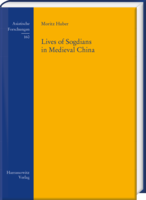|
|
more titles of the subject:
Please note: With adding digital Products to your cart
the payment will be handled via PayPal. The download will be provided after the payment is confirmed. Sogdians, a group of Central Asians based between the Amu Darya and the Syr Darya, played a significant historical role at the crossroads of the Silk Roads. Travelling the world as caravan leaders, organised in trading networks, they were found from Byzantium to the Chinese heartland. The Sogdian language was a candidate for the lingua franca of the Silk Roads for some hundred years and Sogdians acted as polyglot mediators at courts and prominent translators of Buddhist texts. In the Chinese capitals, fire temples were erected for their use and the exotic products they imported were cherished by the people and the court.
This socio-historical study by Moritz Huber provides a translation of the transmitted Chinese records on Sogdians in Sogdiana and China and combines them with archaeological evidence to present a differentiated picture of their presence in China from the 3rd to 10th century CE. Besides the transcription and translation of all epitaphs of Sogdians from an archaeological context, used to tell their interconnected biographies, as well as a detailed discussion of their political organisation in China under the sabao 薩保/薩寶, this publication further includes a case-study of the Shi 史 families in Guyuan 固原, Ningxia 寧夏 Province. |
|||||||||||||||||||||||||||||||||||||||






